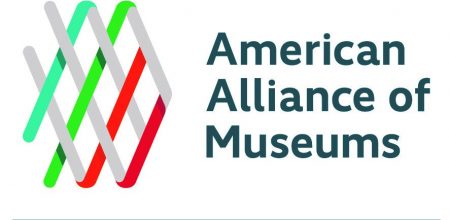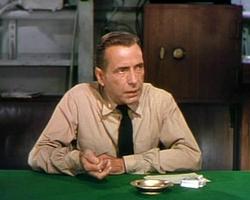
History Advocacy Advisory Alert
The report on the Organization of American Historians conference is interrupted to bring you information about national history advocacy. The following notice was received from the American Association of State and Local History (AASLH)
The COVID-19 pandemic has caused an unprecedented crisis in our local communities, country, and world. Many are seeking answers and guidance during this time, and AASLH has been listening to the concerns from the history community. In response, we are developing more online content for our colleagues working from home. While no one has all the answers, we hope these topic-focused webinars will provide a space for history practitioners to share ideas and learn from each other collectively to help us all keep moving forward. We know many organizations are facing financial strain due to the pandemic, so we are developing this new AASLH Conversations webinar series with that in mind. We have dramatically reduced the registration fee and are also providing a special promo code to waive the registration fee completely. Recognizing that this is a time of crisis that affects the whole field, AASLH included, we appreciate anyone who is still able to contribute to AASLH’s efforts either through the reduced registration fee or a donation.
Webinar Description
Now more than ever, museums realize the value of working in partnership with governments and advocating for policies that benefit museums. National museum organizations’ advocacy programs have been largely targeted to the Federal government, while state and regional museum associations have mostly focused on working with state governments.
Museums miss out if they don’t also work with local government – county and municipal organizations. Many laws and regulations that directly affect museums originate at this level, from zoning to long-term cultural planning and everything in between. Local governments also offer grants which can be life-changing for museums, especially smaller institutions.
This webinar will help demystify local government, help you identify your local government officials, and offer tips to get you started on making your case with government officials closest to the people with the power to help.
Registrants will receive a copy of Technical Leaflet 288: Advocating for Your Organization with Local Government written by webinar speaker Sean Blinn.
Details
DATE: May 7, 2020
TIME: 3:00 – 4:00 pm EASTERN (Remember to adjust for your time zone)
COST: $5 AASLH Members / $10 Nonmembers/ Free for anyone by using promo code below
PROMO CODE: If you or your organization is facing financial strain due to COVID-19, please use promo code FREEWBR20 to waive the registration fee for this webinar. We appreciate anyone who is still able to contribute to AASLH’s efforts through the registration fee or a donation.
ACCESS: You will be provided with instructions on how to access the live event upon registration.
Learning Objectives
After attending this webinar, participants will:
Gain a basic understanding of the structures of local (municipal and county) government
Understand how local government can help museums
Learn how to identify and build relationships with local government officials
Recording and Closed Captioning
We will record this event. Access the Recorded Webinar in the AASLH Resource Center after the event has passed. Registrants of this event receive complimentary access to the recording in their Dashboard.
Closed captioning is provided for the live event. A transcription of the closed captions is provided with the recording.
History advocacy is a weakness of the history community. That shortcoming has been the subject of multiple blogs. In general the community suffers from the “Don’t Ask, Don’t Get” approach. In part this is a reflection of the absence of effective statewide organizations willing and able to promote history advocacy at the state level where funding and education decisions are made. In part it is a reflection of the absence of an agreed upon agenda upon which to rally the history community. Historic preservation tends to be an exception to these conditions. Museums and libraries both of which involve local history also are active in state-wide lobbying efforts. Teachers lobby but not on issues of local and state history or even civics.
At the national level, there is an advocacy effort for museums which often includes history museums but is not limited to them. This action is led by the American Alliance of Museums (AAM). I am not aware of a similar initiative by AASLM although it does partner with AAM on this annual event in February. AASLM also works with the National Coalition for History (NCH). That organization has promoted the development of a Congressional History Caucus (see History Agenda for the New Year (January 6, 2019). It would be beneficial to have a national history advocacy day with just that group of Representatives to begin with.
In the meantime, below is information about the advocacy program held in February in Washington for museums. In many ways, it provides a template for what could be done at the state level just for local and state history.
Museums Advocacy Day 2020 – Feb. 24-25
Legislative Agenda / Issue Briefs
- Issues at a Glance
- IMLS Office of Museum Services Funding
- Tax Policy
- National Endowment for the Humanities (NEH)
- National Endowment for the Arts (NEA)
- Elementary and Secondary Education
- Higher Education
- Science Engagement and STEM Education
- Historic Preservation
- Shutdown Prevention and Economic Impact
The key here is to identify the present sources of funding of the history community. The goal in these advocacy efforts is not to have a philosophical discussion on the value of the history…with one exception. The goal is to maintain or increase funding in the government programs that history museums, organizations, and scholars use right now. Sometimes such funding is funneled through state organizations, something it is directly from the federal government. Either way, even though the funding is not limited to history, the history community has a stake in the amount of the funding and in the types of programs to be funded. These are areas where the history community can advocate at both the federal and state level. The exception on philosophical discussions can occur is in education where changes to the curriculum including civics are discussed.
The AAM program has additional information about the people identified for the advocacy effort and the packets to be left with them.
Here are some of the highlights of the program which occurred in February.
Issues Forum (Optional Program)
What issues, including federal, state, and local, concern you and your museum? All advocates are invited to participate in the discussion.
What to Expect at Museums Advocacy Day (Optional Program)
We invite new and returning advocates, including student advocates, to join us for a special briefing highlighting the unique and important elements of Museums Advocacy Day.
Then there are the meetings with the different organizations relevant to the museums:
Inside the Office of Museum Services at IMLS
National Endowment for the Humanities Chairman
Inside the National Park Service
Inside the National Endowment for the Arts
Inside the National Science Foundation.
Historic Preservation and Funding and America250
So for example to use New York State where I live as an example, a History Advocacy program would include meetings with
New York State Archives
New York State Canals
New York State Council on the Arts
New York State Division of Tourism
New York State Education Department
New York State Historian
New York State Library
New York State Museum
New York State Office of Parks, Recreation, and Historic Preservation
As you can see, the list alone means a logistical challenge as well as the need for a two-day program since it doesn’t even include the Governor’s Office or the Legislatures. While there is no organization in New York to undertake such an ambitious challenge, there may be in smaller states.
At this point, the AAM conference turns to the advocating of elected officials. There are some preparatory sessions on how the budget process works, the specific agenda items, and how to do this.
Making the Case for Museums – A Chief of Staff’s Perspective
Preparing for Capitol Hill – Setting the Stage and Understanding the Budget Process
Preparing for Capitol Hill – Key Issues and Asks
The final and day of the AAM program is spent meeting with elected officials capped with a reception. In New York for example, 55 participants visited 30 elected officials. I presume that required some planning as well as not all 55 people meet with all 30 Representatives and Senators and/or their staff.

MANY Executive Director Erika Sanger leading the NYS contingent
This program is one that members of the history community from around the country can participate. It certainly would be beneficial if your state was represented and to hear about what happened. I mean not just to the members of that state organization that took the lead in organizing the participants from the state but to the larger history community and the general public via the press.
Finally, let me offer as a reminder of another possible way to advocate besides meeting at the state and national capital – lobby at the local level. Take the AAM conference as an example. Suppose the week before there were meetings in New York with those 30 elected representatives in their local offices in New York State. I suspect far more than 55 people would have participated. Or for example, consider the preservation advocacy day I attended in Albany (subject of a future blog). Suppose the week before, people had met with the assembly members and Senators in their home districts. Again, think of how many more people would have been involved. Such efforts are time consuming to organize and implement especially when there is no state history organization to do it. Still, it shows how advocacy for state and local history can be brought to the local level and the lessons learned from the AASLM webinar can be applied.





